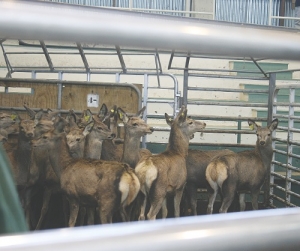Researchers at the US National Animal Disease Center (NADC), Ames, Iowa, have found an antibody that’s 100% specific in detecting Mycobacterium avium subspecies paratuberculosis, aka MAP, the cause of Johne’s disease.
“No one else in the world has been able to find such a specific antibody that binds only to MAP strains, until now,” says USDA Agricultural Research Service microbiologist John Bannantine, of the NADC.
A test based on the newly identified antibody should eliminate the problem of false positives when testing for Johne’s, says Bannantine.
Under current tests producers and vets “may think cattle are infected, based on a positive antibody test result, but they may simply have been exposed to nonpathogenic mycobacteria that’s ubiquitously present in the environment.”
But Hinrich Voges, an LIC vet and member of the Johnes Research Consortium’s expert working group, says current ELISA tests are already highly specific, 99% or more, and only very occasionally does a false-positive occur. For example, a TB cow could potentially test positive on a Johne’s ELISA test.
Under New Zealand’s testing regimes these occasional false positives are of little consequence, but in more intensive test-and-cull programmes the case for 100% specificity is stronger. “Some of the overseas programmes test up to four times a year for instance, and at that point the false positives become an issue,” Voges told Rural News.
What’s really needed is increased sensitivity in the test, and as Voges understands it, the ‘new’ antibody identified by NADC will not deliver that.
A more sensitive test could be a game changer but “therein lies the problem” with tests for Johne’s because mycobacterial infections do not elicit a strong or consistent antibody response until disease is advanced, he explains.
“Perfecting specificity [as Bannantine et al have done] only really becomes relevant in an intensive test-and-cull situation. So there might be some benefits in deer herds that currently undertake repeated screening, assuming it delivers equivalent power of detection (as current ELISA tests).
“In dairy, with the slower progression of the disease, we tend to use ELISA screening in New Zealand to identify advanced MAP infection, and the likely shedders/preclinicals.”
It’s a risk-ranking and mitigation exercise and in such a situation fine-tuning an already-excellent specificity is unlikely to have much benefit, he concludes.

















